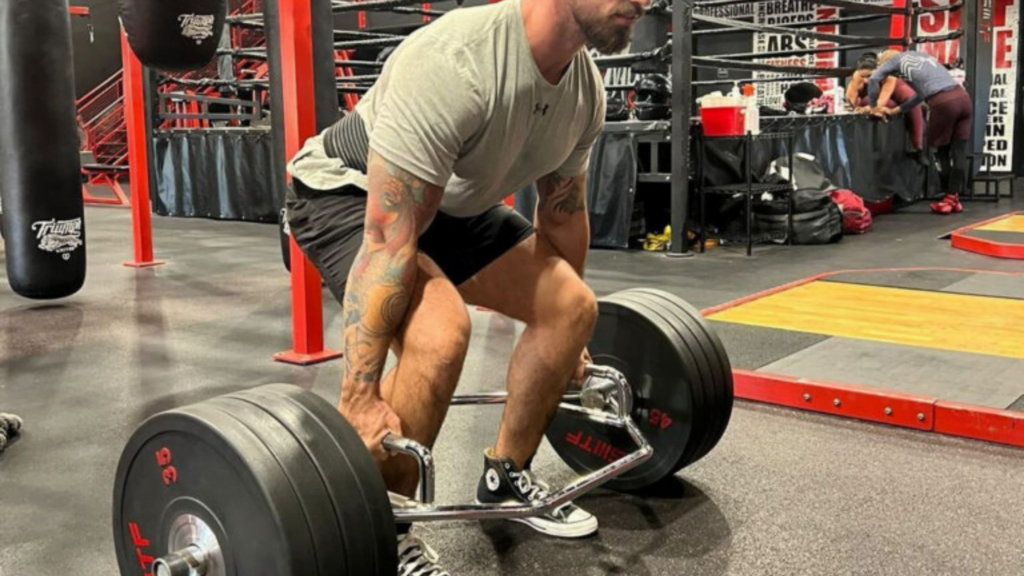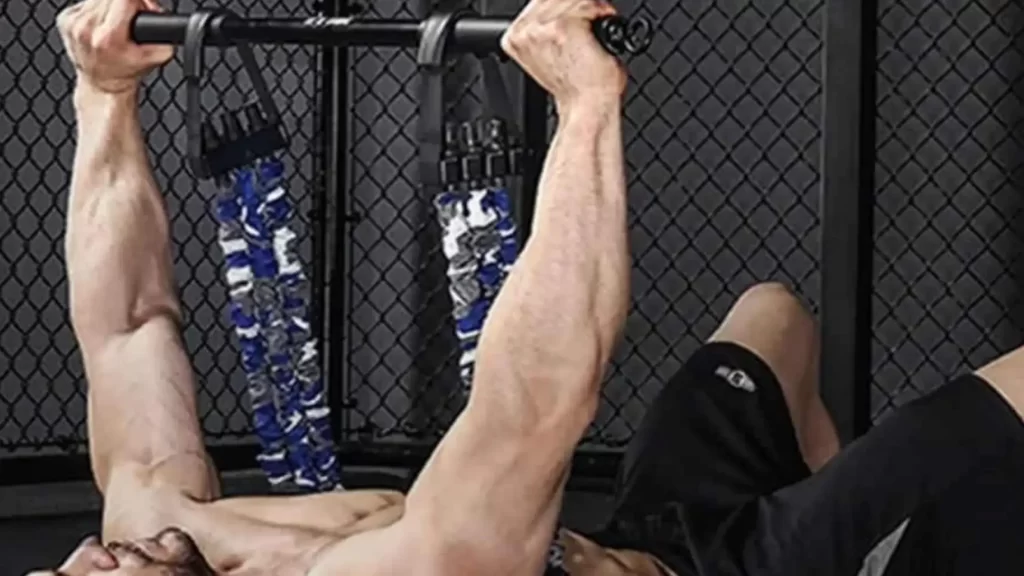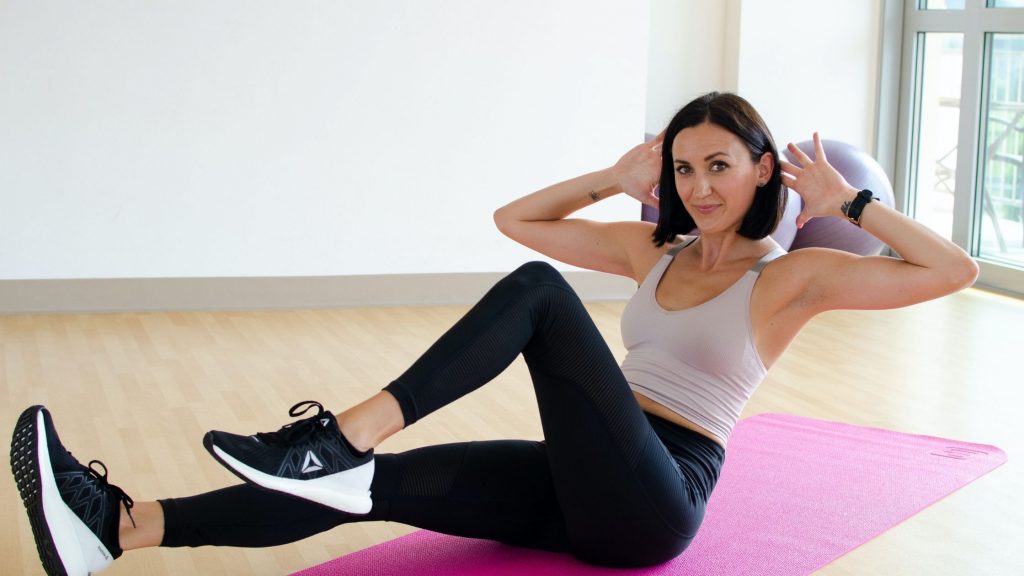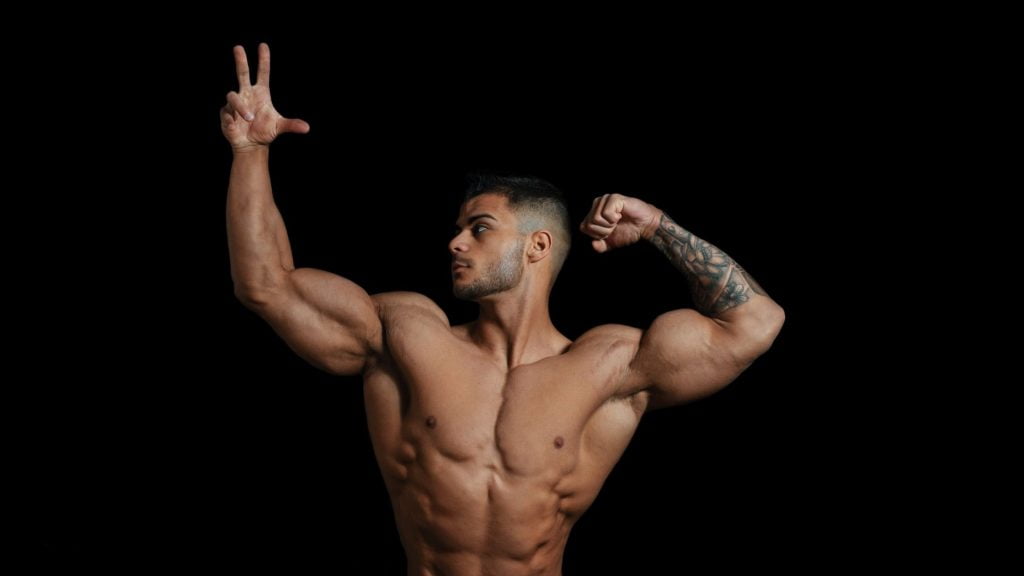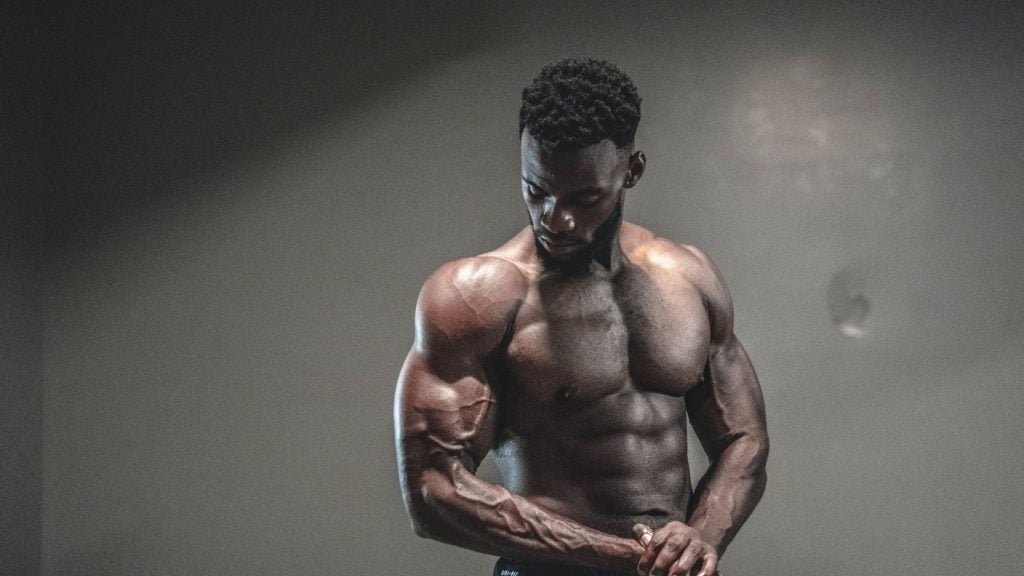One of the most popular exercises in the gym that people get wrong is the Trap Bar Deadlift. The trap bar deadlift is one of the most underrated and overlooked exercises for building bigger, stronger backs. The trap bar deadlift can be used for building overall strength and can also help strengthen the lower back by taking stress off the spine.
I’m Pavel Krotov and I’m fit as a fiddle because of the countless hours spent on various exercise regimens. Years have passed by but experience has taught me that practice makes perfect – and after many years of practice, I’ve become a master in my field. Now people just happen to arrive at my doorstep asking for my help because they know I can help them get fit in no time!
The deadlift is an incredibly simple exercise but it’s also one of the most dangerous if done wrong. This blog will outline the best steps to complete the exercise safely.
Also Read : Deadlift – Technique, Benefits & 7 Variations For BadAss Butt & Legs
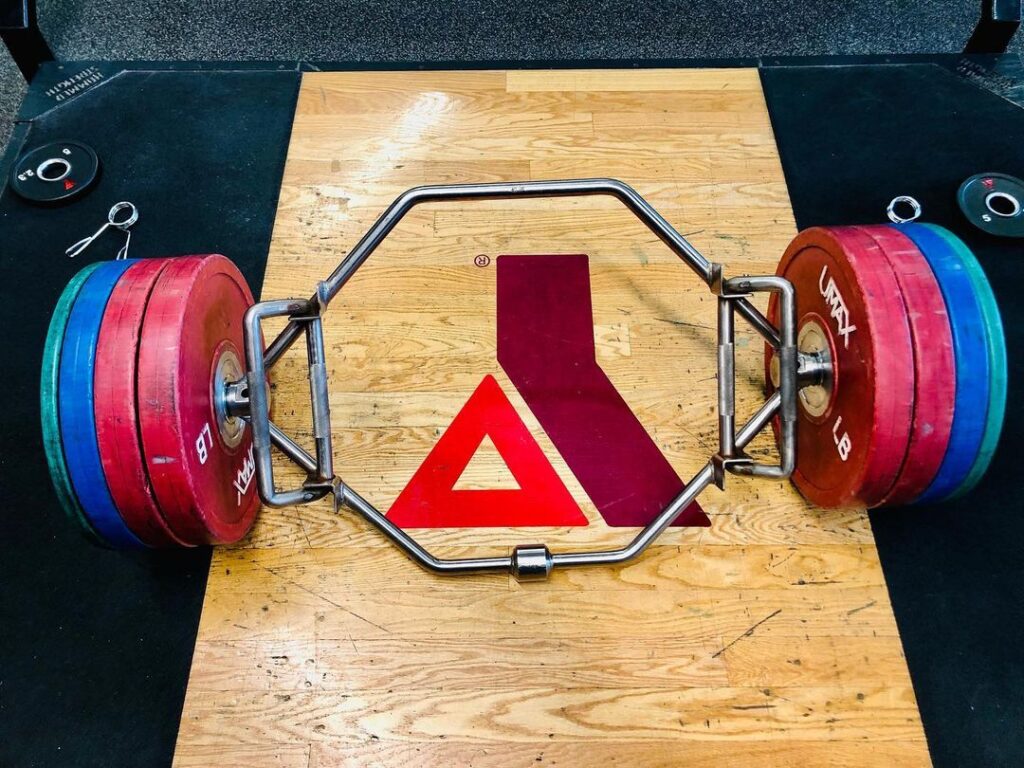
IN THIS ARTICLE
What is a Trap Bar?
Trap bar is a barbell that has a trapezoidal shape. It is used to develop strength in the lower back, legs and glutes. The trap bar is a very versatile piece of equipment that can be used for a variety of exercises. Trap bar deadlifts are a great exercise because they work on your whole body, but they are particularly beneficial for working out your lower back, glutes, and hamstrings. Deadlifts are one of the best exercises for your whole body because they work out your whole back, legs, chest and even your biceps.
The Trap Bar is designed for deadlifts, shrugs, squats, good mornings and more. Trap Bar is primarily used for shrugs, deadlifts, squats, good mornings and shrugs. The bar is similar to a regular barbell, but with a couple of major differences. It is a hexagonally shaped bar which eliminates the need for collars, but is also a smooth surface which allows for the hands to slide freely. It is made of solid steel and it is very durable. The name Trap Bar is based on the fact that it’s a trap for the weights. It is the perfect tool for shrugs and deadlifts.
Both beginners and professional weightlifters can use this bar for a variety of different exercises. The Trap Bar is a versatile piece of equipment that offers a lot of benefits. It can be used for functional training, as well as for rehabilitation. The Trap Bar is a great investment for any weightlifting gym.
How The Trap Bar can help you in your training?
Trap bar deadlifts are a great exercise for building a strong lower back and packing on size to your trap muscles. If you’re not familiar with this piece of equipment, it’s basically a hexagonal shaped bar with handles on it.
You can adjust the weights by adding or subtracting plates on each side, and it functions just like a regular bar. You have your hands set inside the handles, and you can even set the bar on safety pins to perform a deadlift. Trap bar deadlift is a great exercise for beginners to add to their routine. It’s a very safe exercise, and it’s great for people with bad backs because it eliminates the stress on your lower back and puts all of the focus on your hamstrings, glutes and lower back. I’ve never had a problem with my back while deadlifting with a trap bar.
Fitness Expert Matt Collins says that the Trap Bar is very effective in building strength and power.
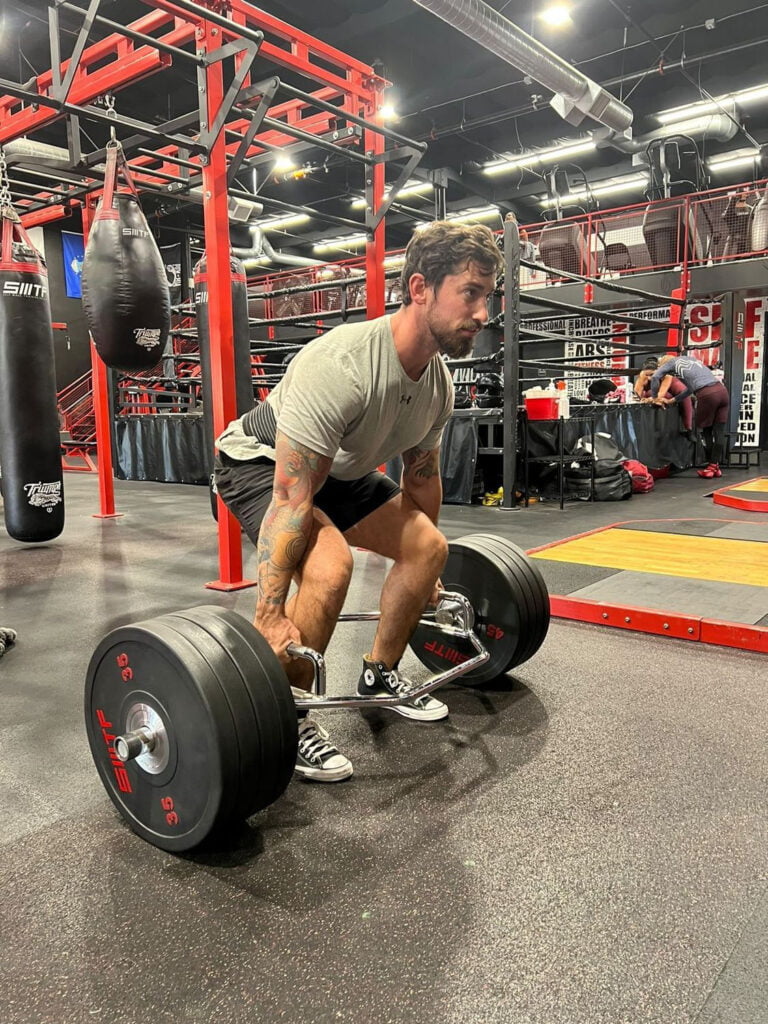
Benefits of Trap Bar Deadlifts
- Easy To Lift
Not everyone is built to deadlift conventionally. This is why we recommend that you learn the trap bar deadlift instead, where it’s easier for people to start off on because it has a more natural grip as opposed to the straight bar. Not only does it make things more comfortable for your hands and arms, but it also puts you in a better position by allowing you to create a neutral spine directly from the start. By doing so, all beginners can actually train in their first session, whereas others would have needed much more practice before perfecting their form.
- Great Grip Strength
Some people suffer from poor grip strength. They use either a mixed hook or strap to hold onto the barbell as they do a regular deadlift. However, this problem is eliminated in the trap bar deadlift because the neutral handle allows you to hold on to the bar and no longer worry about the weight rolling out of your hands or your grip giving out. This means that you can now put more energy into training your back and leg muscles rather than worrying about how much farther you’ll be able to pull before your grip fails you.
- Less Risk of a Bicep Tear
Deadlift-related bicep tears are uncommon. The primary cause of bicep tears during deadlifts is using a mixed grip where one hand holds onto the bar with a closed hand. Trap bar deadlifts, on the other hand, are done with an overhand grip – this makes these lifts safer and more effective than traditional barbell deadlifts when we want to get stronger! Another benefit that trap bars offer is that they allow for a straight arm position – so extraneous injuries can be mitigated. Be sure to also exercise caution by not allowing your elbows to bend throughout your sets!
ALSO READ: Why Yo-Yo Diet Is Terrible? 3 Easy Ways To Repair Your Metabolism
How to do the Trap Bar Deadlift
Step inside of the trap bar and stand with your legs a little bit wider than hip-width apart. Reach down and grasp the handles on either end of the bar, then sit your hips back so that you’re resting your weight on them.
Straighten out your lower back and lift your shoulders upward toward the ceiling, then press your chest forward so that you’re looking down in front of you at a 45 degree angle. While keeping good posture and keeping your spine supported, bend both knees and straighten out those legs to push off into a standing position with trap bar positioned close to mid-thigh height. Then return back down slowly to the floor by bending each knee at an equal pace.
Trap Bar Deadlift Exercises.
- The Trap Bar Shrugs
Trap bar shrug will help you build your own traps. It’s one of the central movements for which the trap bar exists. This movement is a way to develop that size and strength that you’ve always admired in others, especially in competitive weightlifters who use the lift often. You can apply this style of training to other exercises for bigger gains, perhaps in many ways than one.
- The Trap Bar Farmers Walk
Sometimes the most effective exercises are the ones that seem very simple. That is most definitely true when it comes to the farmer’s walk. Although it’s a somewhat elementary exercise, you can get a lot out of performing it on a regular basis, especially if you want to gain strength and endurance in your upper back, traps, hips, core, forearms and grip.
- Trap Bar Floor Press
This is a great movement that can be done with many different types of equipment! We prefer the trap bar to floor presses, so we recommend using this in place of normal barbell bench pressing. Traps tend to really enjoy the fact that their shoulders don’t have anywhere near the amount of range of motion involved that they would during bench presses. The wide hand placement also provides extra stability for those cranky middle-aged, injury-prone wrists.
- The Trap Bar Incline Push Ups
The high handles of the trap bar can be used to perform incline push-ups as well as incline dumbbell push ups – with one dumbbell on either side of your body. It’s also a wonderful tool to use with declining push ups because it gives you a little more height, which will help you build endurance in your upper chest and triceps. You can also use the elevated grip to do some one-arm kettlebell swing variations: for example regular kettlebell swings or sandbag swings.
- Trap Bar Deadlift
The trap bar deadlift is a movement that you might find difficult to figure out what it is without being given specific instructions on how to perform it. And the reason why, if you don’t already know, is because it’s actually super easy to do and there are not many variations of the protocol. Over time trap bar deadlift has been used for basically everything: from building strength during rehabilitation or healing to training or conditioning during a competitive season. This movement works for almost everyone and can adjust itself for anyone’s individual needs, although you might need some help before trying this complex exercise yourself.
Different variations of Trap Bar
- Jumping Trap Bar Deadlift
The Jumping Trap bar can be used as an alternative to trap bar deadlift. By doing this, you improve your rate of force production and power output by allowing yourself a quick explosive burst while focusing on one exercise.
Simply have your hands on the bar’s handles just like how it would be in case you were about to perform a standard jump and when you’re ready, use your legs as if you were about to jump off the ground, but instead of leaving the ground, remain planted there and simply allow yourself a short recovery period before repeating so as not to burn out too fast.
- Deficit Trap Bar Deadlift
The deficit trap bar deadlift is done by standing on a couple plates or a short box to create the right angles for getting into the starting position of what is already considered to be an effective lower back strengthening/rehab exercise. The more difficult angles of a standing deficit deadlift (compared with trap bar lifting from the floor) can make this version more challenging based on your fitness level and goal(s). The deeper angles create a greater demand on the quads, glutes, hamstrings and the targeted muscles that support your lower back because you’re lifting an object from below hip level and above knee level!
- Tempo Trap Bar Deadlifts
Trap bar deadlift is a good exercise to perform for tempo training because it gives you the opportunity to boost awareness of your body’s positioning, but also adds a level of difficulty because it makes the movement harder. Performing this exercise will help you to improve when it comes to determining where the center of gravity is located, which will in turn make you more stable overall! Good job on that!
Also read – Effective Way To Hang Clean -Benefits & 3 Variants
Common Mistakes
- Round Back
The most common mistake athletes make when it comes to the Deadlift is rounding their back rather than keeping it straight. This becomes a problem for Trap Bar Deadlifts because this variation is harder on your lower back. The primary reason for this is that in order to lift the bar, you have to move your hips further back than you would when using traditional equipment. Because of this, physiologically speaking, your quads (front) are doing more work while your hamstrings (rear) are working less. Not only that, but a lot of people compensate by bending at the waist which can result in Hyper-extending their low back. All these things add up to cause an injury such as a herniated disc.
- Hips rise up too fast
If you notice that the hips shoot straight up when weightlifters are trying to lift a heavyweight, it’s normally because they try to put their knees at a right angle and extend it every time in order to have the help of their thigh muscles. Doing this keeps them from being able to lift as much weight. One way they can correct this is by ‘pulling’ with their glutes, keeping those hips from shooting so high up. They must instead extend first before implementing help from the thighs (quadriceps). By doing so, they keep perfect form and get the most out of their workouts!
- Leaning back at the top of the rep
Many lifters find themselves leaning back unnecessarily at the top of the rep when pulling because they think this will allow them to better target their glutes—it’s more common with the barbell deadlift but it still applies here. This sort of practice is bad for your spine and can lead to a fusion of discs in your lower back since the vertebrae are no longer able to move freely against one another! Stand up straight and make sure to tighten your butt at the top of each rep. There’s no reason you need to lean back excessively.
Trap Bar Training Tips
Are you getting the most out of your workouts with your trap bar? Are you maximizing the effectiveness and safety of each movement that you perform? There is no “set” or “repetitions range” that you need to stick to when using a trap bar for exercises. It wouldn’t be any different for any other compound movement where you’d be using low, moderate, or high repetitions.
Use a weight that will allow you to feel the muscle working and also make sure not to overload yourself too much. If one of these exercises doesn’t feel right to you, then adjust it so it does or do one which feels more comfortable for your body instead. If using just a barbell doesn’t feel right when performing certain movements, then use a trap bar instead because it’s a great tool for maximizing your ability to be trained effectively at any time and experienced lifters have been using it for ages.
You want to make sure that the weight on the bar is evenly distributed so that you won’t feel pressure overshooting from one end of the barbell towards another during each repetition of an exercise like squat or deadlift for example.
ALSO READ: 3 Lat Pushdown Variants To Grow Bigger & Stronger Back
Conclusion
If you’re looking to add more muscle to your body, there are a few essential lifts that you should be performing. Trap Bar deadlift is one of these lifts, and it’s an excellent way to build strength and muscle. We hope that you have found this blog post helpful and will consider incorporating Trap Bar deadlift into your workouts.
FAQs
What does a trap bar do?
Trap bar deadlifts are a great way to strengthen the glutes, hamstrings, and back. The main benefit is that the narrower stance of the trap bar reduces stress on the lower back. This exercise is perfect for people with lower back issues. Trap bar deadlifts don’t require as much technical proficiency as regular deadlifts and are very easy to learn.
What is the difference between a trap bar and a hex bar?
Trap bars take on a hexagonal shape and are sometimes referred to as “hex bars,” which is short for hexagonal. Their design makes them more comfortable in the hands and softer on your wrists/forearms because they create room to relieve pressure by flattening that problematic space between your wrist, elbow, and biceps.
Are trap bars better for Deadlifting?
The trap bar can allow you to lift more weight while taking pressure off your back. Since the weight is in closer proximity to the midline and therefore puts less stress on your spine. We advise you do trap bar deadlifts often for a little better overall conditioning.

